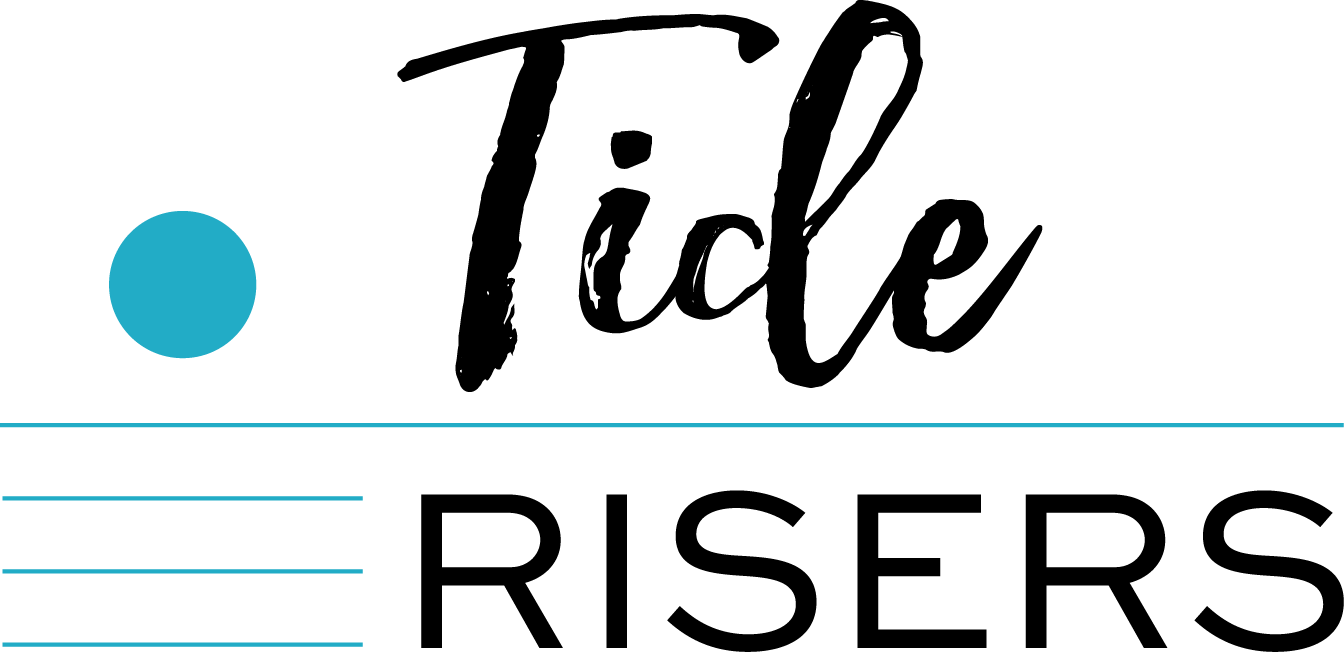Aligning Your Finances with Your Values
Tide Riser Lindsay Ackroyd undertook a comprehensive process to change her banking services and investments to better align her personal finances with her values. Motivated by her desire to take meaningful action to address issues concerning climate change and social justice, she investigated the best options for her finances and made some big changes. Interested in doing the same? Luckily Lindsay took the time to document her process and created a step-by-step guide, which you'll find here.
How to Align Your Finances With Your Values
I am excited to share my personal experiences aligning my finances with my values. It’s been on my to-do list for years, yet the logistics always seemed too time consuming. Also, the “big banks” (I was with Chase) offered me free checking and a pretty seamless banking experience, especially as mobile services grew, so I felt locked into the Chase system. Nor did I have the time to deep dive into the research to discover who performs better around the issues I most care about: climate and social justice.
However, when volunteering for 350.org last fall, I tapped into a campaign created by Grassroots Action New York to defund the Dakota Access Pipeline. They had created a how-to guide for individuals who did not want their money invested in banks who fund pipelines or the fossil fuel industry, and identified the banks who do invest to further social and environmental justice concerns, which you can find here.
This reinvigorated my interest in this topic, and with their resources as a guide, I chose to open my accounts with Amalgamated Bank and an online bank called Aspiration. Amalgamated is a union-owned bank with a progressive agenda. You can read a bit about in this article in the New York Times and this article in Scientific American.
I use Amalgamated for my checking account and gladly benefit from their branches at Union Square, Gramercy, Chelsea, Midtown West, and Wall Street, and more throughout the boroughs. They have free ATMs at CVS, Duane Reade, 7-Eleven, Walgreens, and other delis.
Photo by Fabian Blank
I use Aspiration for my savings as they offer 1% interest for accounts maintaining a balance over $2,500. And, they have free ATM service through several ATM companies; for those ATMs that charge up-front fees, Aspiration credits the fees back to your account at month's end. As an added bonus, their mobile online app is simple and user-friendly. In fact, their app even has a nifty feature that measures your impact through purchases made, which you can read about here.
All said and done, it took me a few weeks to complete the process simply doing steps when I had an hour or so to spare, and it took a few weeks to adjust to the different mobile experiences from my new banks. I’ve had a minor loss of convenience on the ATM front, but now I have changed some banking habits and plan my cash needs ahead a bit more, which has been a benefit. And, now that I’m all set up, I am happy I finally put my money where my mouth is and crossed this off my list.
Below, I’ve included a step-by-step guide on how to make this kind of leap yourself!
Action Plan:
1. Gather your ID, proof of address and money for initial deposit(s) you will be making.
2. Open your new bank account.
You’ll do this in person for retail banks and online or over the phone for online banks like Aspiration. Each should take under an hour.
3. Update direct deposit payment information.
Request the form from your employer to change your banking details, and find out when the change will go into effect.
4. Update payment information for auto-pay accounts like bills and utilities, subscription services, and charities.
These might include:
- Mortgage/rent payments
- Credit cards
- Utilities
- Websites, apps and other subscription services (e.g., Apple, Netflix, Amazon, PayPal, Seamless, Spotify, Lyft, etc.)
- Charitable organizations you give to on an automated schedule
5. Double check past few bank statements!
A couple of recent bank account statements should turn up any additional auto-payments or saved payment info you may have forgotten about.
6. Set up an external transfer from your old bank to your new one.
This can take a few days as the bank verifies the account. The maximum transfer amount is often $5K per day, so schedule transfers daily as needed. See next step below about low balances in your old account(s).
7. Close your old bank account(s).
You must go in person with ID, and any remaining balance can be given to you in cash or check. Do not leave this step too long as you can incur fees if you keep a low balance. Your best bet is to always check what the minimum balance is for your account before you incur fees.
What’s Next?
I am now in the process of rolling over my old company 401K to a traditional IRA, and I am interviewing prospective wealth management advisors with expertise in Socially Responsible or Impact Investments. I will share my experience when I have more insight to offer.
Photo by Chris Li
In the meantime, here is a recent article in Fast Company which provides a good overview to the different channels available to individual investors in this sector.
Lastly, About Those Energy Bills
Have you switched your electric bill to renewable energy? This is a very simple, small step you can take toward voting with your wallets. I have been with Clean Choice Energy for two years now. My home is powered by renewable wind and solar energy from an ethically operated and independent company (not a “green” subsidiary of a fossil fuel giant), and my energy costs are no more expensive.
Any further questions, please post questions in the comments below or get in touch with Tide Risers here to learn more.
Happy banking!


